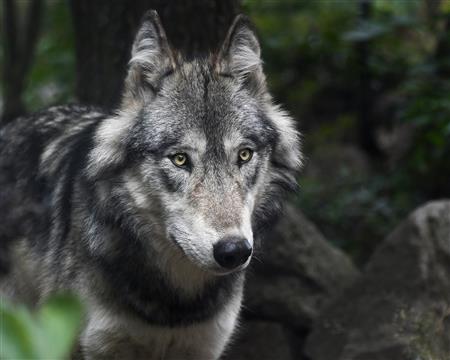
EcoEducation: Wolves in Minnesota
Minnesota is the home of the greatest number of wolves in the contiguous United States. In 2018, the DNR estimated the number of wolves in Minnesota to be 2655. This is up from the estimated low of 400 wolves in the 1950s. When wolves were placed on the endangered species list in 1974, North Eastern Minnesota and the UP in Michigan were the only places in the lower 48 states with any wolf population. Today the DNR seeks to ensure a minimum population of 1600 wolves in Minnesota. There are about 4-5 wolves per pack and a pack has an average range of 61 miles. Competition for territory and food is an inherent population control mechanism. The Minnesota wolf population has remained statistically unchanged for several years.
Misi Stine, Outreach Director for the International Wolf Center in Ely, shared some of the amazing insights into wolf behavior uncovered by researchers in Voyageurs National Park. The research done at Voyageurs is unique because it is done in the summer. Dense foliage, absence of tracks in snow, and greater speed (no snow drifts to slow movement) makes observing wolves in the summer more difficult. The researchers have put radio collars on wolves within the packs at Voyageurs and the surrounding area. The collars send a signal every 20 minutes. If signals show the wolves as stationary for more than 40 minutes, the researchers go to that area. This procedure has made it possible to put cameras in areas of frequent activity.
The cameras have provided visual documentation of previously unknown wolf eating habits. Researchers suspected for a while that beaver make up 10-20% of the wolf diet during the summer. Now through the tracking procedure they have two recordings of wolves hunting and eating beaver. They also have visual documentation that inland (ie not coastal) wolves eat fish. Video shows wolves in Voyageurs hunting spawning suckers. Just like humans, the wolves will collect multiple fish before they start to eat. In other words, they fish when the fishing is good. And surprisingly, researchers also captured video evidence of wolves eating blueberries. The height of the blueberry crop is also when the wolves' preferred diet of deer and moose are at their healthiest and hardest to catch. The researchers have not determined whether the blueberries provide a nutritional benefit or just serve to fill the wolves' stomachs. They have determined that in July, blueberries can be up to 83% of the wolf diet.
The International Wolf Center's mission is to advance the survival of wolves through education. They accomplish this via the International Wolf Magazine, the ambassador wolves at the center, and through outreach to schools and organizations throughout the world. The center promotes facts about wolves and wolf behavior and do not seek to censure the concerns of ranchers and farmers. The story of the wolf is complex and the center seeks to tell the whole story.
Wolves Catching Freshwater Fish in Northern Minnesota
